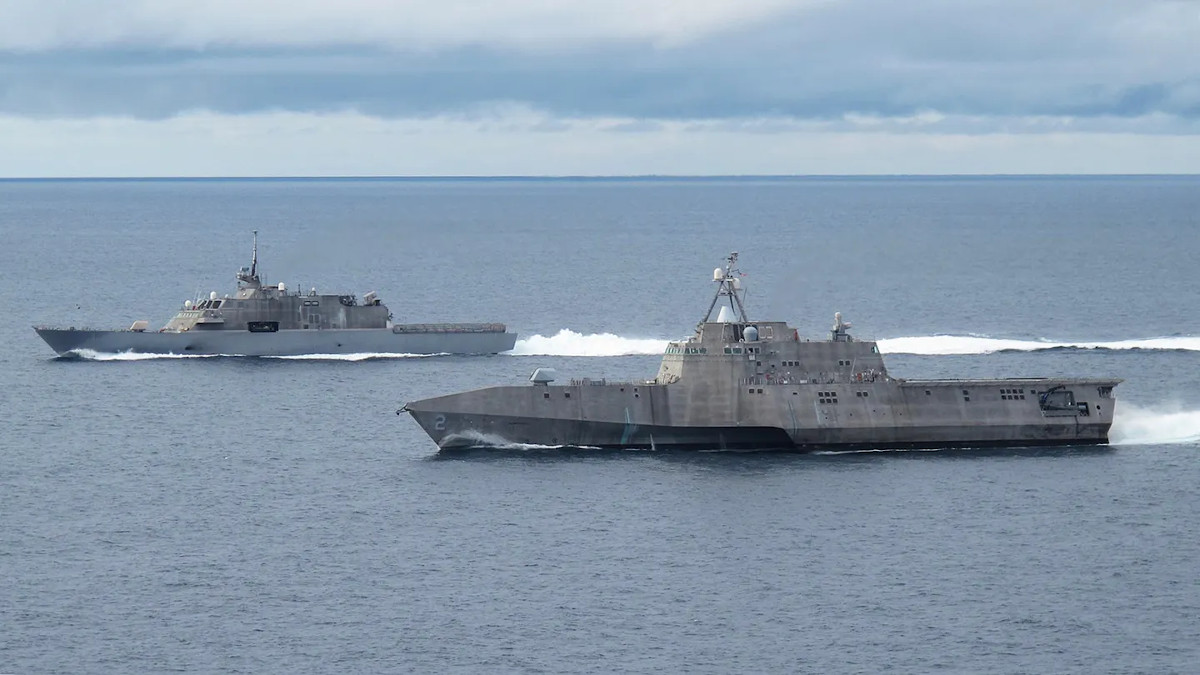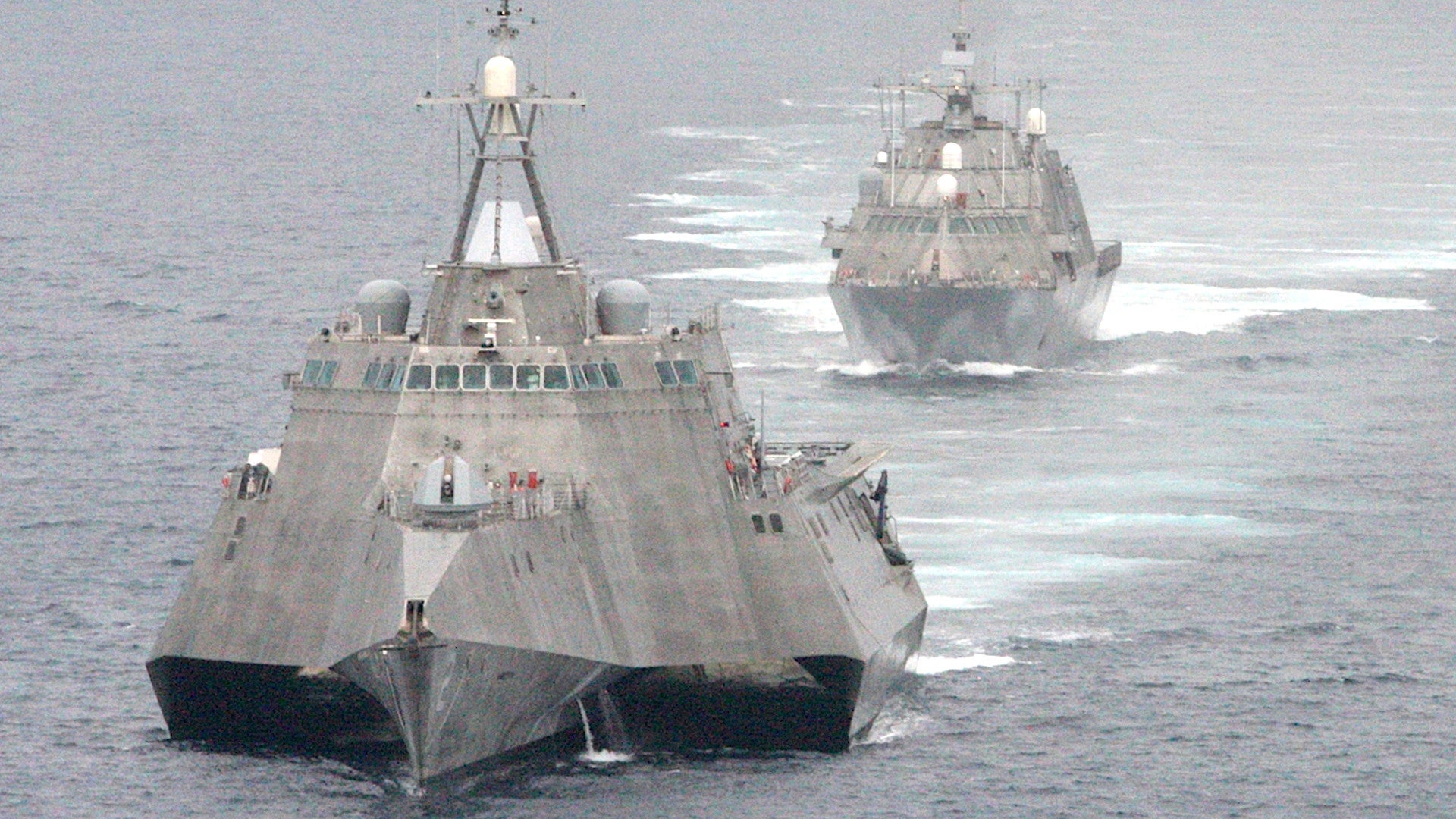The U.S. Navy expects the first four of its perpetually underperforming Littoral Combat Ships, a pair of ships from each of the two subclasses, to be out of service within the next nine months. Some members of Congress, however, are now seeking to block the mothballing of two of these vessels until all of the tests of the various and continually delayed mission modules for each variant are complete, which is still years away from happening.
The Navy provided the update on its plans to inactivate these Littoral Combat Ships in an official internal message dated June 20, 2020, which Defense News
was first to report. The missive says that USS Freedom and USS Independence, both of which are the first ships in their subclasses, along with the Freedom class USS Fort Worth and Independence class USS Coronado, are set to be “Out of Commission, In Reserve,” or OCIR, by March 2021.

The Navy first revealed its plans to retire these four LCSs, also known by their hull numbers, LCS 1 through LCS 4, in its budget request for the 2021 Fiscal Year, which it released in February 2020. The service had previously planned to assign these ships to a new surface warfare development unit, Surface Development Squadron One, where they would have joined the three Zumwalt class stealth destroyers, the last of which is still under construction, and the Sea Hunter unmanned surface vessel.
It was an unprecedented admission that the Navy did not feel that these vessels were even worth keeping around in a primarily test and evaluation role and as the seagoing force continues to struggle to find a pathway to reaching its long-standing goal of a total fleet size of 355 ships. These first four littoral combat ships were commissioned between 2008 and 2014, making them all relatively young vessels. However, the reflected early iterations of their respective designs and had already been relegated to test and training roles for years.
“Those four test ships were instrumental to wringing out the crewing, the maintenance and all the other things we needed to learn from them,” Navy Rear Admiral Randy Crites, the Deputy Assistant Secretary of the Navy for Budget, said a press briefing for the 2021 Fiscal Year budget request in February. “But they’re not configured like the other LCS in the fleet, and they need significant upgrades. Everything from combat [systems], to structural, you name it. They’re expensive to upgrade.”
It’s worth noting that the Navy does not appear to have ever publicly disclosed what it would cost to fully upgrade these four LCSs. The fact that these initial examples differ so significantly from later models is also a product of a process called concurrency, wherein the production of the ships began with the understanding that modifications and fixes would get inserted throughout the process. This was supposed to help reduce costs by allowing for construction to ramp up quicker than normal, but the amount of reworking necessary proved to be more extensive than initially expected.
The Navy is still continuing to take deliveries of new LCSs. Just this week, it accepted the delivery of the future USS Oakland, an Independence class vessel, which the service touted as being on track to bring its total fleet to 300 ships. It’s not clear how long that milestone might last amid the planned retirements of the first four LCSs and other ships.
The Navy is also working to make the three different mission modules fully operational. There are presently three different packages, a mine countermeasures one, one focused on anti-submarine warfare, and another that provides additional anti-surface warfare capabilities.
The original plan had been that these modular packages would allow for the relatively rapid reconfiguration of individual LCSs from one mission set to another, making the multi-mission capable without having to lug around all of the different weapons and other relevant systems at once. This was a core component of the LCS program.
The Navy has since decided that this is not necessarily a viable operational model and it plans to effectively permanently mount certain modules on various ships in both subclasses, which will make them significantly less flexible. The service has begun creating new dedicated Mine Divisions within Littoral Combat Ship Squadrons in recent years, reflecting this change in the concept of operations.
Still, the capabilities the LCSs offer, even with the various mission modules installed, have long been underwhelming. There is an effort underway now to add launchers for the RGM-148A Naval Strike Missile (NSM) to at least some of the ships, giving them a sorely needed boost in firepower.

At the same time, the Navy effectively admitted the limitations of the two LCS classes in 2017, when it announced plans to acquire a new class of frigates with more robust multi-mission capabilities. In April, the service selected Marinette Marine, a U.S.-subsidiary of Italian shipbuilder Fincantieri, to build at least the first of these ships, which are known presently as FFG(X)s. The design will be based on the Franco-Italian Fregata Europea Multi-Missione (FREMM), or European Multi-Mission Frigate.
U.S. President Donald Trump courted some controversy last week by saying that Marinette Marine had won the lucrative contract in no small part for political reasons based on the shipyard’s location. “I hear the maneuverability is one of the big factors that you were chosen for the contract,” Trump told workers at the company’s yard in Wisconsin on June 25, 2020. “The other is your location in Wisconsin, if you want to know the truth.”
The Navy also recently had to defend its cost estimate for the initial 10 FFG(X)s to members of Congress. The House and the Senate are both in the process of finalizing their respective versions of the annual defense policy bill, or National Defense Authorization (NDAA), for the 2021 Fiscal Year and some legislators are looking for an independent evaluation of the projected costs of the frigate program.
With regards to the LCS program, lawmakers in the House also want to block the retirement of the Fort Worth and the Coronado “until the Secretary [of the Navy] has submitted a certification that all operational tests have been completed on all mission modules.” Based on the language in the Senate’s draft NDAA, this could be years away. Testing of the mine countermeasures module is slated to wrap up in 2022, while initial operational test and evaluation of the anti-submarine warfare package isn’t even supposed to start until next year. Tests of the surface warfare mission module are also still ongoing.

Members of the House and the Senate still need to finish up work on their respective NDAAs and reconcile them before putting to them a vote, after which the bill could make its way to President Trump’s desk for him to sign. It remains to be seen if the House’s LCS provisions will make their way into a final NDAA that becomes law.
No matter how many of the first four LCSs ultimately get retired, their future is still uncertain. The Navy defines the “Out of Commission, In Reserve” status as “status of a decommissioned Navy ship being held in reserve for future mobilization purposes,” leaving open the possibility it could reactive these ships in the future. Other ships listed in the June 20 message are slated for complete dismantlement.
Regardless, the Navy clearly wants to at least send all of these ships into mothballs by early next year, if Congress will let them.
Contact the author: Joe@thedrive.com
